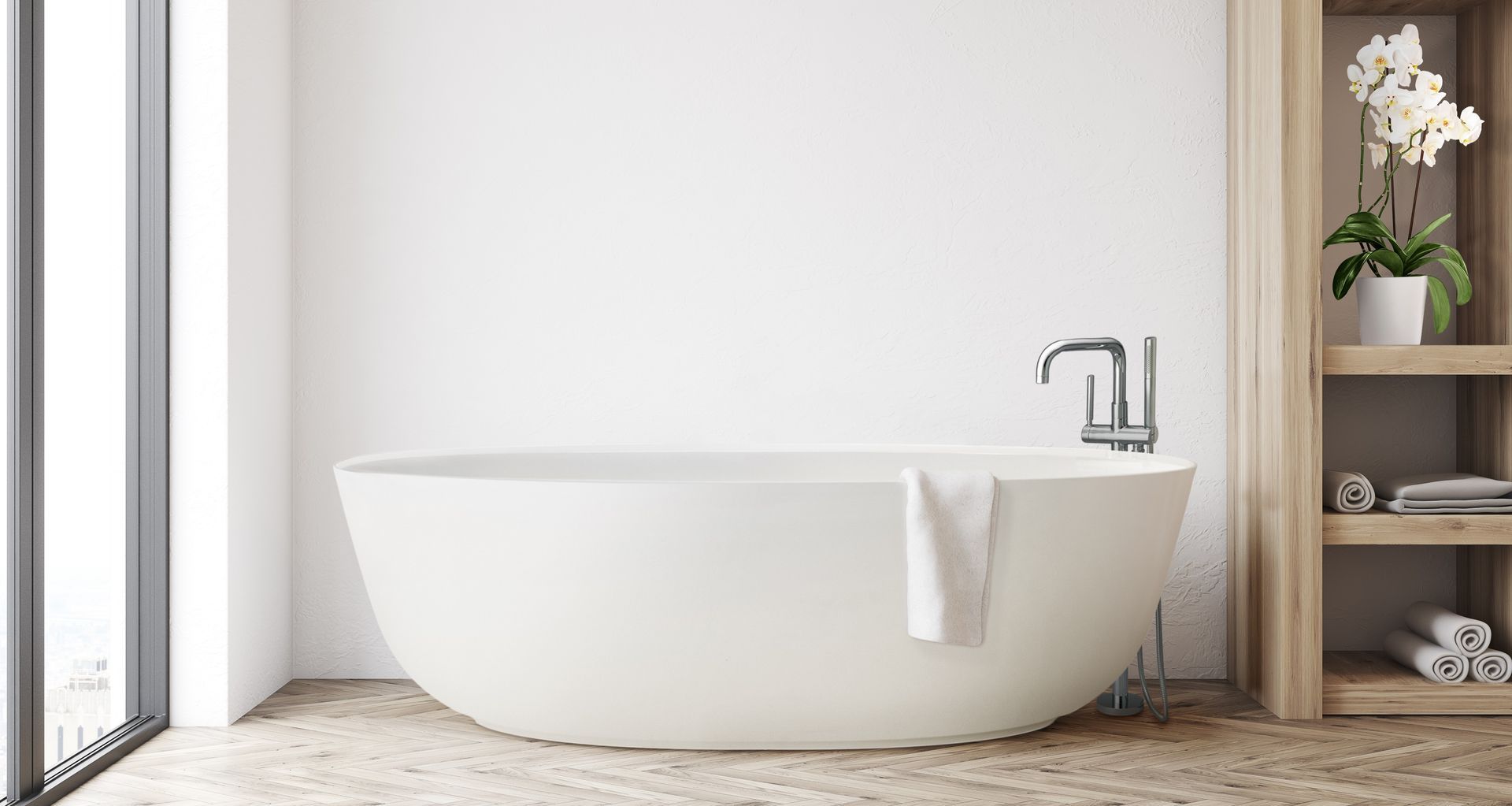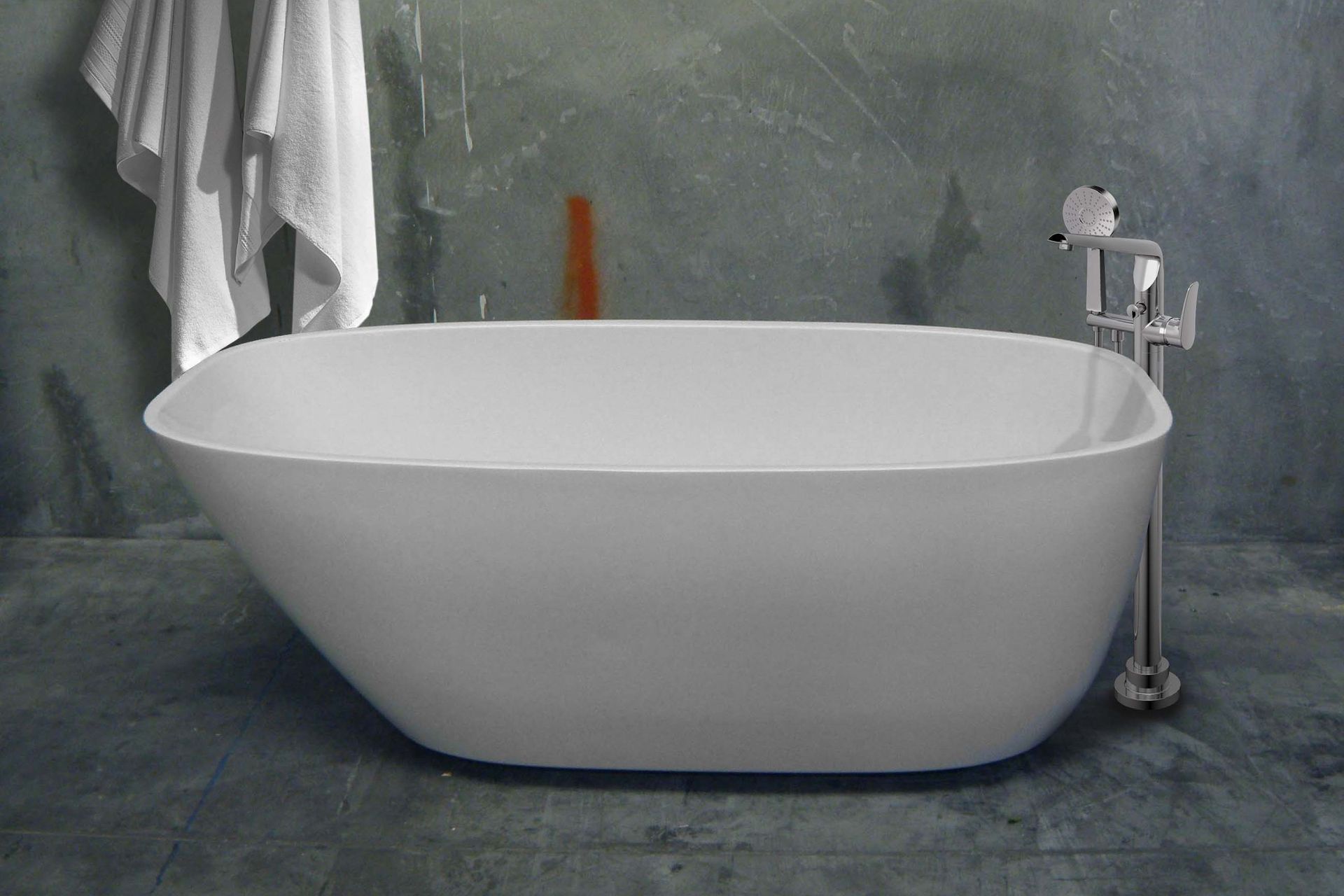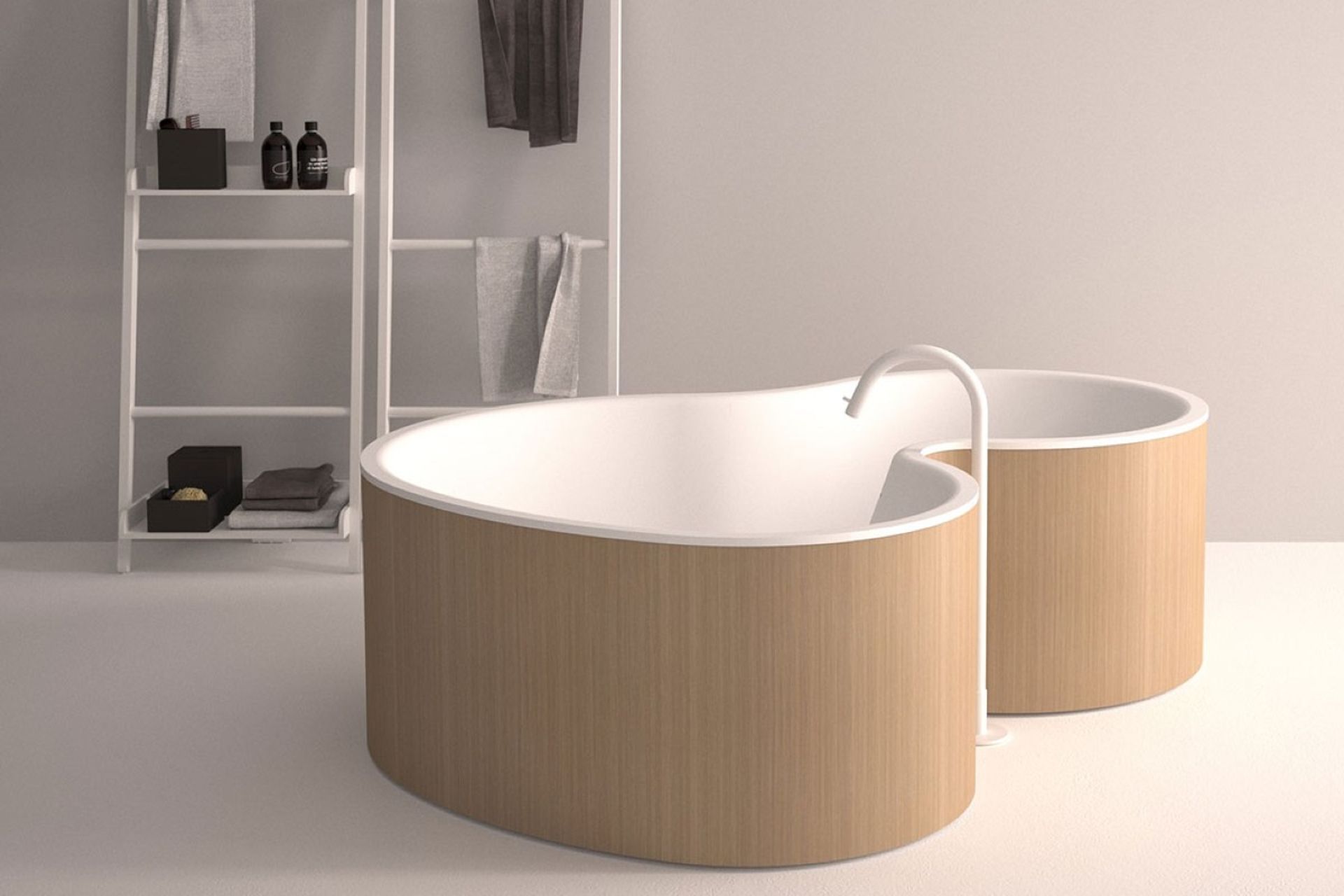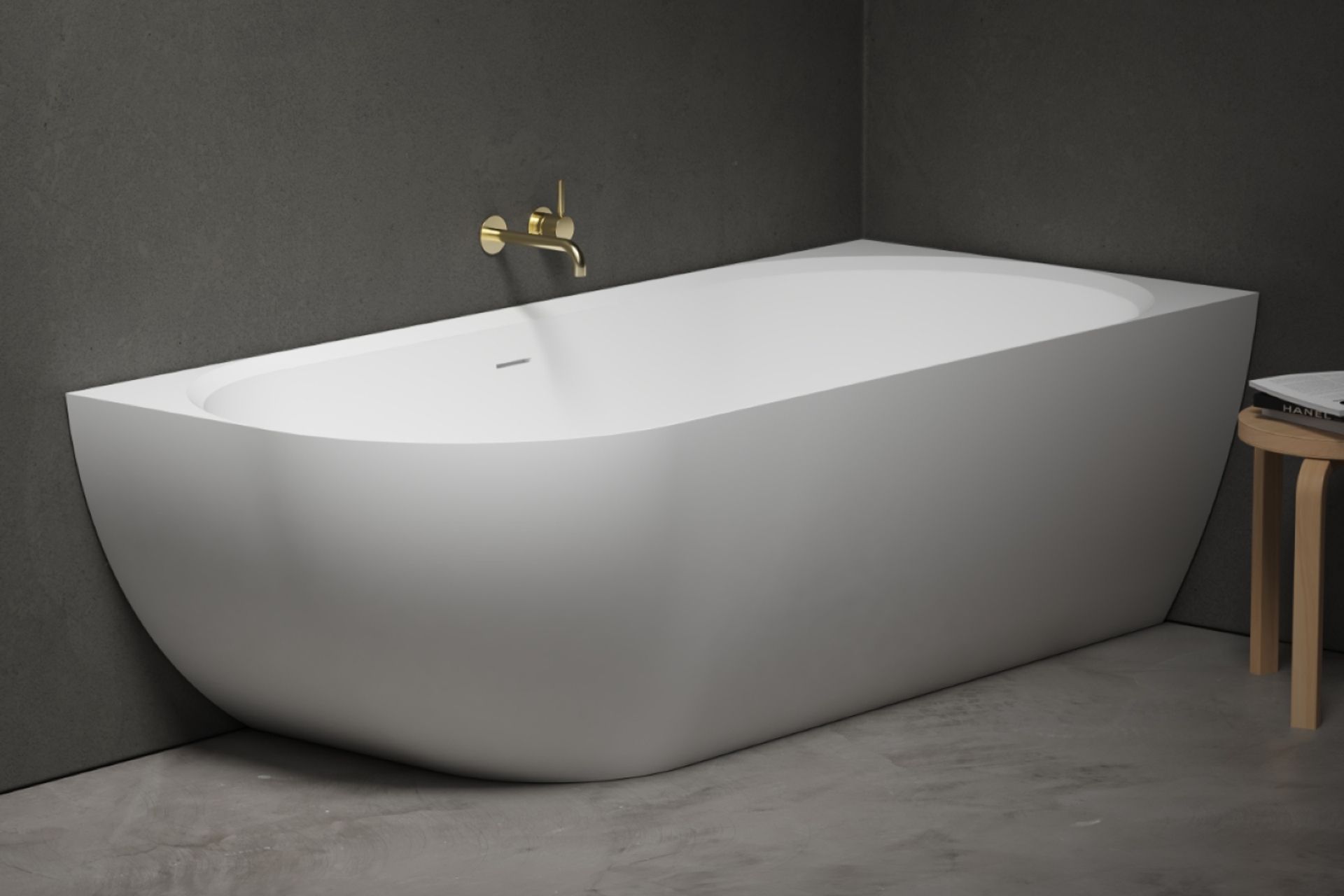Bathtub sizes in New Zealand: making the right choice
Written by
30 March 2023
•
9 min read

Bathtubs come in all shapes and sizes with a variety of types to choose from and plenty of diversity within those choices. Knowing what will work best in your bathroom layout involves a number of important factors including the type of tub you want, how much space you have, the proximity to other bathroom features and more. Luckily, these can all be easily addressed so you can make an informed choice when the time comes.
What is the size of a standard bath in New Zealand?
Most bathroom professionals agree that the standard size for a bathtub in New Zealand is one that is approximately 60 inches long (1,524 mm), 30 inches wide (762 mm), and 18 inches high (457 mm). However, as mentioned in the introduction, bathtubs come in a wide range of styles and sizes. One of the biggest factors that influence the size of a bathtub is the actual type of tub that it is. Again, this is an area that has some variation but also some consistency at the same time as many of these types are often made for specific purposes and situations.

Sizes of different types of bathtubs
When building or renovating a bathroom, it's a good idea to have some knowledge about different types of bathtubs and their broad dimensions before thinking seriously about them. That way, you won't get too attached to one particular type of bath before finding out it’s not a practical option. It’s also good to understand the ways they are best used to make sure they are a suitable choice from a functional point of view.
1. Alcove bathtubs
Alcove bathtubs fit within a space bound by three walls. It has a finished side on the front, known as an apron. The two ends of the bathtub are open since these sides are covered by the walls in your bathroom.
Alcove bathtubs are common in small and medium bathrooms because they fit within the space between the walls. In larger bathrooms, the walls might be too far apart to fit a standard alcove bathtub. In this case, a partition wall may be necessary to create the proper-sized alcove.
For the most part, alcove bathtubs fall within the standard size listed above. Smaller sizes ranging from 48 to 55 inches (1,219 to 1,397 mm) long are also available.
2. Drop-in bathtubs
Drop-in bathtubs are dropped into an opening in a constructed deck. These types of bathtubs don't have any finished sides. The deck, often made from tile, acts as the sides of the bathtub.
A drop-in tub can fit into an alcove in small and medium-sized bathrooms. But, they are better suited for larger bathrooms since the deck will take up a lot of space.
Drop-in bathtubs are available in standard dimensions but are also available in custom sizes. This might range anywhere from 45 to 72 inches (1,143 to 1,829 mm) in length.

3. Corner bathtubs
Corner baths are installed in the corner of a bathroom. They often have a triangular shape with two unfinished sides and a front apron, like an alcove bathtub. This type of bathtub can also be a drop-in style tub, built into a triangular deck.
They can be quite good as a space-saving solution as they tuck nicely into a corner of a bathroom. However, they can also exist as quite a large bath in more luxurious models.
Due to their shape, corner bathtubs have two sides of the same length. The standard length for these sides is often around 60 inches (1,524 mm) but they can range from 48 to 72 inches (1,219 to 1,829 mm).
4. Freestanding bathtubs
Freestanding baths can stand anywhere in your space and are often the focal point of the bathroom. Since they aren't fitted into an alcove or deck, all sides of the tub are finished. Popular types of freestanding tubs include clawfoot bathtubs and oval bathtubs.
Freestanding bathtubs are often about the same size as other types of bathtubs, but since they aren't bound by walls, they take up more space. You will typically need about 3 inches (76 mm) of space around the ends and 4 inches (101 mm) of space from the wall. Because of this, freestanding bathtubs are best suited for medium and large bathrooms.
Freestanding bathtubs measure between 55 to 72 inches (1,397 mm to 1,829 mm) long and 27 to 32 inches (686 mm to 813 mm) wide. Oval bathtubs are often a bit wider at 41 inches (1,041 mm).
The average depth of a freestanding bathtub is from 15 to 20 inches (381 mm to 508 mm). A soaking tub in this style will be a bit deeper so you can be submerged in the water. The average depth of a soaking tub is from 27 to 34 inches (686 mm to 864 mm).

5. Walk-in bathtubs
Walk-in bathtubs are ideal for people with limited mobility or balance issues that might make it challenging to step into a standard tub. These types of bathtubs have a door that allows the bather to step into the tub, usually with a bench to sit on. These attributes enable people who might otherwise need help to bathe independently.
You may be able to fit a walk-in tub into an existing alcove. Due to their unique design features, they are often a bit wider than the standard bathtub. They range from 48 to 60 inches long (1,219 to 1,524 mm) and 28 to 36 inches wide (711 to 914 mm).
Walk-in bathtubs are often much deeper than most bathtubs at 38 inches (965 mm). This is because the bather sits on a bench as opposed to sitting on the floor of the tub.
Related article: 11 different types of bathtubs: pros and cons
How to take the correct dimensions of a bathtub
In most cases, determining the correct bathtub dimensions is as easy as taking a few measurements. Depending on the scope of your project, you may need to measure other areas of your bathroom space too.
Measuring your current bathtub
If you're replacing your current bathtub, you will need to take the following measurements:
- Overall length
- Overall width
- Overall height
- Soaking depth
- Basin length
- Basin width
For an alcove tub, the overall length will be from wall to wall on the sides. The overall width will be from the back wall to the front edge.
For drop-in and freestanding tubs, measure from one outer edge to the other outer edge to get the overall length and width.
It's important to know the overall height of your bathtub, so you don't need to move the fixtures when installing the new tub. It's also a good idea to measure the soaking depth, which is the deepest part of the bathtub to the overflow point.

Planning your new one
If you're adding a bathroom or changing the type of bathtub in your current space, there are a few more things you will need to consider. The standard tub size takes up at least 13 square feet. Small bathrooms are usually about 36 to 40 square feet, so the bathtub may take up as much as one-third of the available space.
If you have a small bathroom, careful space planning is crucial. A good rule of thumb to follow is that the toilet or vanity should be at least 12 inches (305 mm) from the edge of the tub. This gives you enough space to move in and out of the tub comfortably and safely.
Related article: Bath vs shower: water usage, cleanliness and other FAQs

Other factors to bear in mind
While the practical factors of size and space are central to this discussion, there are a few other considerations to bear in mind before making that fateful decision.
1. Personal bathing preferences
An important part of the bathing experience comes down to comfort and the size of the bathtub you choose is crucial to this. In what seems obvious, you'll need a bath that is long enough for you to stretch out comfortably. If you enjoy a deep soak, the depth of a bath is something you'll need to look at closely as well.
2. Accessibility
This has already been touched on briefly but is worth reiterating. If you or members of your household have mobility issues, then you'll need to prioritise a bath that they can use safely, like a walk-in tub. You may also need to install accessories like grab rails.
3. Aesthetics
A bathroom that looks good becomes a big asset in a home, especially when it comes to resale value. Making sure you pick a bath that is an appropriate size, in terms of styling, will help you achieve a balanced look in your bathroom. If you don't, you'll end up with a bath that overwhelms or underwhelms the space.
4. Pricing and costs
There are a lot of factors that can influence the purchase price of a bathtub, but one of the main ones is size — the bigger the tub, the more you'll likely have to pay. A larger tub will also mean your ongoing utility costs will be higher for power and water too.
5. Installation and maintenance
Bigger bathtubs can generally be more complex and costly to install. This is particularly true if it's going to be installed on the second storey of a home (or higher), as the weight of the tub, when filled with water, may require additional structural support for safety reasons, which adds another dimension of cost to your project. A big bath also means more surface area to keep clean, something you'll have to be willing to commit to before going forward.
Related article: Bathroom renovation costs in New Zealand: A full breakdown

Which bathtub size is right for you?
As you can see, there are many things to consider before deciding what sized tub will serve you best. Being familiar with these standard bathtub sizes will go a long way toward creating a more functional space that also looks balanced to the eye. It will allow you to enjoy your bathroom with ease as the refreshing and relaxing space that it should be.
(This article was updated on the 20th November 2024)
Discover an extensive range of high-quality bathtubs on ArchiPro